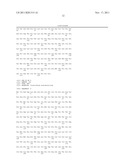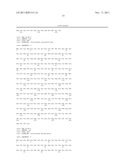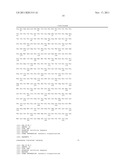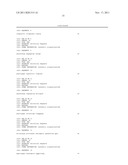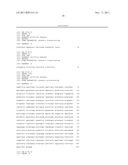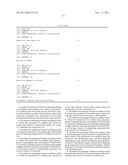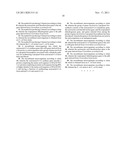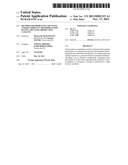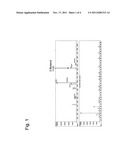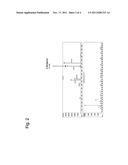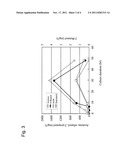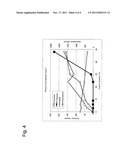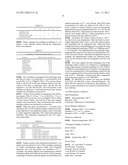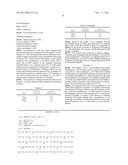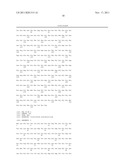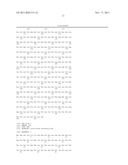Patent application title: METHOD FOR PRODUCING 2-BUTANOL AND RECOMBINANT MICROORGANISM HAVING 2-BUTANOL PRODUCTION CAPACITY
Inventors:
Masayoshi Muramatsu (Miyoshi-Shi, JP)
Masayoshi Muramatsu (Miyoshi-Shi, JP)
Kazuyo Suzuki (Toyota-Shi, JP)
Assignees:
TOYOTA JIDOSHA KABUSHIKI KAISHA
IPC8 Class: AC12P716FI
USPC Class:
435160
Class name: Containing hydroxy group acyclic butanol
Publication date: 2011-11-17
Patent application number: 20110281315
Abstract:
This invention is intended to produce 2-butanol with excellent
productivity via a fermentation process. Recombinant microorganisms into
which the acetoacetyl-CoA synthase gene and a group of genes (i.e., genes
involved in 2-propanol synthesis) encoding a set of enzymes synthesizing
2-propanol from acetoacetyl-CoA have been introduced are cultured, so
that, in addition to 2-propanol, 2-butanol is produced at a high level in
a medium.Claims:
1. A method for producing 2-butanol comprising culturing a recombinant
microorganism into which an acetoacetyl-CoA synthase gene and a group of
genes involved in 2-propanol biosynthesis associated with a metabolic
pathway that synthesizes 2-propanol from acetoacetyl-CoA have been
introduced and obtaining 2-butanol from the culture product.
2. The method for producing 2-butanol according to claim 1, wherein the acetoacetyl-CoA synthase gene encodes an enzyme that catalyzes a reaction that converts two acetyl-CoA molecules into acetoacetyl-CoA.
3. The method for producing 2-butanol according to claim 2, wherein the acetoacetyl-CoA synthase gene is the thiolase gene (the thlA gene) derived from Clostridium acetobutylicum.
4. The method for producing 2-butanol according to claim 3, wherein the acetoacetyl-CoA synthase gene encodes a protein comprising the amino acid sequence of SEQ ID NO: 2 or a protein comprising an amino acid sequence having 80% or higher identity to the amino acid sequence of SEQ ID NO: 2 and having a function of synthesizing acetoacetyl-CoA from two acetyl-CoA molecules.
5. The method for producing 2-butanol according to claim 1, wherein the acetoacetyl-CoA synthase gene encodes an enzyme that catalyzes a reaction that converts acetyl-CoA and malonyl-CoA into acetoacetyl-CoA.
6. The method for producing 2-butanol according to claim 5, wherein the acetoacetyl-CoA synthase gene is a gene (the orfN gene) derived from a Streptomyces microorganism.
7. The method for producing 2-butanol according to claim 6, wherein the acetoacetyl-CoA synthase gene encodes a protein comprising the amino acid sequence of SEQ ID NO: 1 or a protein comprising an amino acid sequence having 80% or higher identity to the amino acid sequence of SEQ ID NO: 1 and having a function of synthesizing acetoacetyl-CoA from malonyl-CoA and acetyl-CoA.
8. The method for producing 2-butanol according to claim 1, wherein the group of genes involved in 2-propanol biosynthesis consists of the acetoacetyl-CoA transferase gene, the acetoacetic acid decarboxylase gene, and the isopropanol dehydrogenase gene, and the recombinant microorganism is obtained via introduction of genes selected from among the group of genes involved in 2-propanol biosynthesis, wherein the genes to be introduced are not exist in the microorganism as an endogenous gene.
9. The method for producing 2-butanol according to claim 8, wherein the acetoacetyl-CoA transferase gene is the ctfA or ctfB gene derived from Clostridium acetobutylicum.
10. The method for producing 2-butanol according to claim 8, wherein the acetoacetic acid decarboxylase gene is the adc gene derived from Clostridium acetobutylicum.
11. The method for producing 2-butanol according to claim 8, wherein the isopropanol dehydrogenase gene is the pdh gene derived from Clostridium beijerinckii.
12. The method for producing 2-butanol according to claim 1, wherein the recombinant microorganism is obtained from an E. coli host strain.
13. The method for producing 2-butanol according to claim 12, wherein the E. coli strain is an E. coli K strain.
14. A recombinant microorganism into which the acetoacetyl-CoA synthase gene (the orfN gene) derived from a Streptomyces microorganism and a group of genes involved in 2-propanol biosynthesis associated with a metabolic pathway for synthesizing 2-propanol from acetoacetyl-CoA have been introduced.
15. The recombinant microorganism according to claim 14, wherein the acetoacetyl-CoA synthase gene encodes a protein comprising the amino acid sequence of SEQ ID NO: 1 or a protein comprising an amino acid sequence having 80% or higher identity to the amino acid sequence of SEQ ID NO: 1 and having a function of synthesizing acetoacetyl-CoA from malonyl-CoA and acetyl-CoA.
16. The recombinant microorganism according to claim 14, wherein the group of genes involved in 2-propanol biosynthesis consists of the acetoacetyl-CoA transferase gene, the acetoacetic acid decarboxylase gene, and the isopropanol dehydrogenase gene, and genes selected from among the group of genes involved in 2-propanol biosynthesis has been introduced, wherein the genes to be introduced are not exist in the microorganism as an endogenous gene.
17. The recombinant microorganism according to claim 16, wherein the acetoacetyl-CoA transferase gene is the ctfA or ctfB gene derived from Clostridium acetobutylicum.
18. The recombinant microorganism according to claim 16, wherein the acetoacetic acid decarboxylase gene is the adc gene derived from Clostridium acetobutylicum.
19. The recombinant microorganism according to claim 16, wherein the isopropanol dehydrogenase gene is the pdh gene derived from Clostridium beijerinckii.
20. The recombinant microorganism according to claim 14, which is obtained from an E. coli host strain.
21. The recombinant microorganism according to claim 20, wherein the E. coli strain is an E. coli K strain.
Description:
BACKGROUND OF THE INVENTION
[0001] 1. Field of the Invention
[0002] The present invention relates to a method for producing butanol using a recombinant microorganism having butanol production capacity, into which genes involved in 2-butanol (or sec-butyl alcohol) biosynthesis have been incorporated, and a recombinant microorganism.
[0003] 2. Background Art
[0004] In recent years, depletion of petroleum resources and global reduction of carbon dioxide emissions have been actively discussed. It is predicted that the petroleum prices will sharply increase in the future. Therefore, development of alternative petroleum materials has been awaited. For example, there have been attempts to bioconvert biomass, sugar, starch, fat and oil, proteins, and the like, which have been produced by plants from water and carbon dioxide, into alternative petroleum materials with the use of solar energy for practical use. An example of such an attempt is the development of the technology of producing plant-derived polylactic acid or polybutylene succinate as alternative plastic materials made from petroleum. Further, ethanol is obtained via fermentative production from sugar, starch, or the like and blended with automobile fuel purified from petroleum so as to be used in the U.S.A., Brazil, and other countries.
[0005] In addition, 2-butanol is an important compound that can be used for either fuel or resin material. 2-Butanol is an important substance as a starting material for high-octane automobile fuel or for resin such as propylene. In the past, 2-butanol had been synthesized using petroleum as a starting material. In view of petroleum depletion and the increased amount of CO2 emitted into the air, 2-butanol synthesis via a fermentation process has been desired.
[0006] US 2007/0265477 discloses a method for synthesizing 2-butanol from 2-butanone with the use of a carbonyl reductase. WO 2008/098227 discloses a method for synthesizing 2,3-butanediol via a fermentation process and then chemically converting 2,3-butanediol into 2-butanol. Further, WO 2008/137403 discloses a method for directly synthesizing 2-butanol from 2,3-butanediol via a fermentation process.
[0007] According to the method disclosed by US 2007/0265477, however, highly purified 2-butanol cannot be obtained because ketones are simultaneously generated. The enzyme reaction of a carbonyl reductase disclosed by US 2007/0265477 requires the use of NADH, which is difficult to mass-produce and is very expensive. A secondary alcohol may be added to the reaction system and NADH resulting from an oxidation reaction thereof may be used. Such method, however, may suffer from the problem of contamination with an alcohol other than the target 2-butanol and an oxide of such alcohol.
[0008] The method disclosed by WO 2008/098227 requires the use of a catalyst containing rare metals such as platinum or rubidium at high concentrations (e.g., 5% by weight) in the reaction system. In addition, the method requires the use of a hydrogenation catalyst and an acid catalyst for the entire reaction. According to the method disclosed by WO 2008/098227, the efficiency for chemical conversion into 2-butanol is about 70% at most. That is, this method is disadvantageously low in productivity.
[0009] According to the method disclosed by WO 2008/137403, acetolactic acid synthesized from the two pyruvic acid molecules generated in the glycolytic pathway is converted into 2-butanol through acetoin, 2,3-butanediol, and 2-butanone. That is, this method involves many reaction steps and thus is poor in productivity.
SUMMARY OF THE INVENTION
Object of the Invention
[0010] Under the above circumstances, it is an object of the present invention to provide a method for producing 2-butanol with excellent productivity via a fermentation process. It is another object to provide a recombinant microorganism having excellent capacity for 2-butanol production.
Means for Attaining the Object
[0011] The present inventors have conducted concentrated studies in order to attain the above objects. As a result, surprisingly, they discovered that, along with 2-propanol, 2-butanol would be produced at a high level via culture of recombinant microorganisms into which the acetoacetyl-CoA synthase gene and genes (i.e., genes involved in 2-propanol synthesis) encoding a group of enzymes synthesizing 2-propanol from acetoacetyl-CoA have been introduced. This has led to the completion of the present invention. The present invention includes the following.
[0012] (1) A method for producing 2-butanol comprising culturing a recombinant microorganism into which an acetoacetyl-CoA synthase gene and a group of genes involved in 2-propanol biosynthesis associated with a metabolic pathway that synthesizes 2-propanol from acetoacetyl-CoA have been introduced and obtaining 2-butanol from the culture product.
[0013] (2) The method for producing 2-butanol according to (1), wherein the acetoacetyl-CoA synthase gene encodes an enzyme that catalyzes a reaction that converts two acetyl-CoA molecules into acetoacetyl-CoA.
[0014] (3) The method for producing 2-butanol according to (2), wherein the acetoacetyl-CoA synthase gene is the thiolase gene (the thlA gene) derived from Clostridium acetobutylicum.
[0015] (4) The method for producing 2-butanol according to (3), wherein the acetoacetyl-CoA synthase gene encodes a protein comprising the amino acid sequence of SEQ ID NO: 2 or a protein comprising an amino acid sequence having 80% or higher identity to the amino acid sequence of SEQ ID NO: 2 and having a function of synthesizing acetoacetyl-CoA from two acetyl-CoA molecules.
[0016] (5) The method for producing 2-butanol according to (1), wherein the acetoacetyl-CoA synthase gene encodes an enzyme that catalyzes a reaction that converts acetyl-CoA and malonyl-CoA into acetoacetyl-CoA.
[0017] (6) The method for producing 2-butanol according to (5), wherein the acetoacetyl-CoA synthase gene is a gene (the orfN gene) derived from a Streptomyces microorganism.
[0018] (7) The method for producing 2-butanol according to (6), wherein the acetoacetyl-CoA synthase gene encodes a protein comprising the amino acid sequence of SEQ ID NO: 1 or a protein comprising an amino acid sequence having 80% or higher identity to the amino acid sequence of SEQ ID NO: 1 and having a function of synthesizing acetoacetyl-CoA from malonyl-CoA and acetyl-CoA.
[0019] (8) The method for producing 2-butanol according to (1), wherein the group of genes involved in 2-propanol biosynthesis consists of the acetoacetyl-CoA transferase gene, the acetoacetic acid decarboxylase gene, and the isopropanol dehydrogenase gene, and the recombinant microorganism is obtained via introduction of genes selected from among the group of genes involved in 2-propanol biosynthesis, wherein the genes to be introduced are not exist in the microorganism as an endogenous gene.
[0020] (9) The method for producing 2-butanol according to (8), wherein the acetoacetyl-CoA transferase gene is the ctfA or ctfB gene derived from Clostridium acetobutylicum.
[0021] (10) The method for producing 2-butanol according to (8) or (9), wherein the acetoacetic acid decarboxylase gene is the adc gene derived from Clostridium acetobutylicum.
[0022] (11) The method for producing 2-butanol according to any of (8) to (10), wherein the isopropanol dehydrogenase gene is the pdh gene derived from Clostridium beijerinckii.
[0023] (12) The method for producing 2-butanol according to (1), wherein the recombinant microorganism is obtained from an E. coli host strain.
[0024] (13) The method for producing 2-butanol according to (12), wherein the E. coli strain is an E. coli K strain.
[0025] (14) A recombinant microorganism into which the acetoacetyl-CoA synthase gene (the orfN gene) derived from a Streptomyces microorganism and a group of genes involved in 2-propanol biosynthesis associated with a metabolic pathway for synthesizing 2-propanol from acetoacetyl-CoA have been introduced.
[0026] (15) The recombinant microorganism according to (14), wherein the acetoacetyl-CoA synthase gene encodes a protein comprising the amino acid sequence of SEQ ID NO: 1 or a protein comprising an amino acid sequence having 80% or higher identity to the amino acid sequence of SEQ ID NO: 1 and having a function of synthesizing acetoacetyl-CoA from malonyl-CoA and acetyl-CoA.
[0027] (16) The recombinant microorganism according to (14), wherein the group of genes involved in 2-propanol biosynthesis consists of the acetoacetyl-CoA transferase gene, the acetoacetic acid decarboxylase gene, and the isopropanol dehydrogenase gene, and genes selected from among the group of genes involved in 2-propanol biosynthesis has been introduced, wherein the genes to be introduced are not exist in the microorganism as an endogenous gene.
[0028] (17) The recombinant microorganism according to (16), wherein the acetoacetyl-CoA transferase gene is the ctfA or ctfB gene derived from Clostridium acetobutylicum.
[0029] (18) The recombinant microorganism according to (16) or (17), wherein the acetoacetic acid decarboxylase gene is the adc gene derived from Clostridium acetobutylicum.
[0030] (19) The recombinant microorganism according to (16) or (17), wherein the isopropanol dehydrogenase gene is the pdh gene derived from Clostridium beijerinckii.
[0031] (20) The recombinant microorganism according to (14), which is obtained from an E. coli host strain.
[0032] (21) The recombinant microorganism according to (20), wherein the E. coli strain is an E. coli K strain.
Effects of the Invention
[0033] The present invention can provide a method for producing 2-butanol with excellent productivity with the use of a recombinant microorganism having 2-butanol production capacity. According to the method for producing 2-butanol of the present invention, specifically, productivity of 2-butanol used for a fuel or a resin material can be improved, and the cost of butanol production can be reduced.
[0034] Also, the recombinant microorganism of the present invention has a capacity for butanol production superior to that of a conventional recombinant microorganism having butanol production capacity.
BRIEF DESCRIPTION OF THE DRAWINGS
[0035] FIG. 1 is a characteristic diagram showing the results of GC-MS analysis of the culture solution of a recombinant E. coli strain.
[0036] FIG. 2 is a characteristic diagram showing the results of GC-MS analysis of standard substances.
[0037] FIG. 3 is a characteristic diagram showing the results of quantification of the amounts of 2-butanol and other substances produced by the recombinant E. coli E/BL21 strain.
[0038] FIG. 4 is a characteristic diagram showing the results of quantification of the amounts of 2-butanol and other substances produced by the recombinant E/NB strain.
EMBODIMENTS OF THE INVENTION
[0039] Hereafter, the present invention is described in detail.
[0040] The method for producing 2-butanol (or sec-butyl alcohol) of the present invention comprises culturing a recombinant microorganism into which the acetoacetyl-CoA synthase gene and genes involved in 2-propanol biosynthesis associated with a metabolic pathway for synthesizing 2-propanol from acetoacetyl-CoA have been introduced and obtaining 2-butanol from the culture product.
Acetoacetyl-CoA Synthase Gene
[0041] The acetoacetyl-CoA synthase gene encodes an enzyme having activity of synthesizing acetoacetyl-CoA from malonyl-CoA and acetyl-CoA or an enzyme having activity of synthesizing acetoacetyl-CoA from two acetyl-CoA molecules. The enzyme having activity of synthesizing acetoacetyl-CoA from two acetyl-CoA molecules is occasionally referred to as "thiolase."
[0042] The gene encoding an acetoacetyl-CoA synthase having activity of synthesizing acetoacetyl-CoA from malonyl-CoA and acetyl-CoA has been found in, for example, an actinomycete of the genus Streptomyces (JP Patent Publication (Kokai) No. 2008-61506 A). For example, a gene derived from an actinomycete of the genus Streptomyces can be used.
[0043] An example of such an acetoacetyl-CoA synthase gene is a gene encoding a protein having the amino acid sequence of SEQ ID NO: 1. Such a protein having the amino acid sequence of SEQ ID NO: 1 corresponds to an acetoacetyl-CoA synthase having activity of synthesizing acetoacetyl-CoA from malonyl-CoA and acetyl-CoA and having no activity of synthesizing acetoacetyl-CoA from two acetyl-CoA molecules, and it has been found in an actinomycete of the Streptomyces sp. CL190 strain (JP Patent Publication (Kokai) No. 2008-61506 A).
[0044] The gene encoding a protein having the amino acid sequence of SEQ ID NO: 1 can be obtained by a nucleic acid amplification method (e.g., PCR) with the use of genomic DNA obtained from an actinomycete of the Streptomyces sp. CL190 strain as a template and a pair of primers that was designed with reference to JP Patent Publication (Kokai) No. 2008-61506 A.
[0045] As a gene encoding an acetoacetyl-CoA synthase (thiolase) having activity of synthesizing acetoacetyl-CoA from two acetyl-CoA molecules, a known gene, which is the acetoacetyl-CoA synthase gene identified in various organisms, can be used. The acetoacetyl-CoA synthase gene is involved in a mevalonic acid pathway existing in a variety of organism species.
[0046] An example thereof is the thiolase gene derived from Clostridium acetobutylicum (deposited under the accession number ATCC824). The thiolase gene derived from Clostridium acetobutylicum is denoted by the thlA gene, and it encodes a protein having the amino acid sequence of SEQ ID NO: 2. Examples of the thiolase genes that can be used include genes derived from Schizosaccharomyces pombe, Saccharomyces cerevisiae, Escherichia coli, Macaca mulatta, Bos taurus, Drosophila melanogaster, Oryza sativa, Aspergillus oryzae, Bacillus amyloliquefaciens, and Clostridium kluyveri.
[0047] In the present invention, the acetoacetyl-CoA synthase gene is not limited to a gene encoding a protein having an amino acid sequence of SEQ ID NO: 1 derived from the Streptomyces sp. CL190 strain, and it may be a gene encoding a protein comprising an amino acid sequence highly similar to the amino acid sequence of SEQ ID NO: 1 and having the function of synthesizing acetoacetyl-CoA from malonyl-CoA and acetyl-CoA. In the present invention, the acetoacetyl-CoA synthase gene is not limited to a thiolase gene encoding a protein having the amino acid sequence of SEQ ID NO: 2 derived from Clostridium acetobutylicum, and it may be a gene encoding a protein comprising an amino acid sequence highly similar to the amino acid sequence of SEQ ID NO: 2 and having the function of synthesizing acetoacetyl-CoA from two acetyl-CoA molecules. The expression "highly similar" used herein refers to, for example, 80% or higher identity, preferably 90% or higher identity, more preferably 95% or higher identity, and most preferably 97% or higher identity. Herein, the identity value corresponds to the percentage of amino acid residues in the amino acid sequence of SEQ ID NO: 1 or 2 and another amino acid sequence that are identical, and it is calculated by aligning the amino acid sequence of SEQ ID NO: 1 or 2 with another amino acid sequence, with the use of a program for searching for sequence similarity (occasionally referred to as the "homology search program").
[0048] In the present invention, the acetoacetyl-CoA synthase gene may be a gene encoding a protein having an amino acid sequence derived from the amino acid sequence of SEQ ID NO: 1 by substitution, deletion, addition, or insertion of 1 or more amino acids and having the function of synthesizing acetoacetyl-CoA from malonyl-CoA and acetyl-CoA. In the present invention, further, the acetoacetyl-CoA synthase gene may be a gene encoding a protein having an amino acid sequence derived from the amino acid sequence of SEQ ID NO: 2 by substitution, deletion, addition, or insertion of 1 or more amino acids and having the function of synthesizing acetoacetyl-CoA from two acetyl-CoA molecules. Herein, the expression "more amino acids" refers to, for example, 2 to 30 amino acids, preferably 2 to 20 amino acids, more preferably 2 to 10 amino acids, and most preferably 2 to 5 amino acids.
[0049] In the present invention, the acetoacetyl-CoA synthase gene may be a polynucleotide hybridizing to a portion or the entirety of a polynucleotide having a nucleotide sequence complementary to the nucleotide sequence encoding the amino acid sequence of SEQ ID NO: 1 under stringent conditions and encoding a protein having the function of synthesizing acetoacetyl-CoA from malonyl-CoA and acetyl-CoA. In the present invention, further, the acetoacetyl-CoA synthase gene may be a polynucleotide hybridizing to a portion or the entirety of a polynucleotide having a nucleotide sequence complementary to the nucleotide sequence encoding the amino acid sequence of SEQ ID NO: 2 under stringent conditions and encoding a protein having the function of synthesizing acetoacetyl-CoA from two acetyl-CoA molecules. Herein, hybridization under stringent conditions takes place while binding is maintained during washing at 60° C. in 2×SSC. Hybridization can be carried out by conventionally known methods such as the method described in J. Sambrook et al., Molecular Cloning, A Laboratory Manual, 2nd Ed., Cold Spring Harbor Laboratory, 1989.
[0050] A gene encoding an acetoacetyl-CoA synthase having an amino acid sequence that differs from the amino acid sequence of SEQ ID NO: 1 as described above can be isolated from, for example, an actinomycete other than the Streptomyces sp. CL190 strain. Also, a gene encoding an acetoacetyl-CoA synthase having an amino acid sequence that differs from the amino acid sequence of SEQ ID NO: 2 can be isolated from, for example, Clostridium bacteria other than Clostridium acetobutylicum (ATCC824). In addition, such gene can be obtained by modifying a polynucleotide encoding the amino acid sequence of SEQ ID NO: 1 or 2 by a method known in the art. Mutagenesis of a nucleotide sequence can be carried out by a known method such as the Kunkel method or the gapped duplex method, or by a method similar to either thereof. For example, mutagenesis may be carried out with the use of a mutagenesis kit based on site-specific mutagenesis (e.g., Mutant-K and Mutant-G (trade names, TAKARA Bio)) or an LA PCR in vitro Mutagenesis series kit (trade name, TAKARA Bio).
[0051] The activity of an acetoacetyl-CoA synthase having an amino acid sequence that differs from the amino acid sequence of SEQ ID NO: 1 can be evaluated in the manner described below. Specifically, a gene encoding a protein to be evaluated is first introduced into a host cell such that the gene can be expressed therein, followed by purification of the protein by a technique such as chromatography. Malonyl-CoA and acetyl-CoA are added as substrates to a buffer containing the obtained protein to be evaluated, followed by, for example, incubation at a desired temperature (e.g., 10° C. to 60° C.). After the completion of the reaction, the amount of substrate lost and/or the amount of product (acetoacetyl-CoA) produced are measured. This enables evaluation of whether or not the protein to be evaluated has the function of synthesizing acetoacetyl-CoA from malonyl-CoA and acetyl-CoA and evaluation of the degree of synthesis. In such case, it is possible to examine whether or not the protein has the activity of synthesizing acetoacetyl-CoA from two acetyl-CoA molecules by adding acetyl-CoA alone as a substrate to a buffer containing the obtained protein to be evaluated and measuring the amount of substrate lost and/or the amount of product produced in a similar manner.
[0052] The activity of an acetoacetyl-CoA synthase having an amino acid sequence that differs from the amino acid sequence of SEQ ID NO: 2 can be evaluated in the manner described below. Specifically, a gene encoding a protein to be evaluated is first introduced into a host cell such that the gene can be expressed therein, followed by purification of the protein by a technique such as chromatography. Acetyl-CoA is added as a substrate to a buffer containing the obtained protein to be evaluated, followed by, for example, incubation at a desired temperature (e.g., 10° C. to 60° C.). After the completion of the reaction, the amount of substrate lost and/or the amount of product (acetoacetyl-CoA) produced are measured. This enables evaluation of whether or not the protein to be evaluated has the function of synthesizing acetoacetyl-CoA from two acetyl-CoA molecules and evaluation of the degree of synthesis.
Group of Genes Involved in 2-Propanol Biosynthesis
[0053] The term "group of genes involved in 2-propanol biosynthesis" refers to a group consisting of a plurality of genes encoding enzymes associated with the metabolic pathway for biosynthesizing 2-propanol as a final product from acetoacetyl-CoA as a starting compound. Examples of enzymes associated with the metabolic pathway of 2-propanol biosynthesis include acetoacetyl-CoA transferase that synthesizes acetyl acetic acid using acetoacetyl-CoA as a substrate, acetoacetic acid decarboxylase that synthesizes acetone using acetyl acetic acid as a substrate, and isopropanol dehydrogenase that synthesizes 2-propanol using acetone as a substrate.
[0054] Genes encoding such enzymes can be isolated from microorganisms having 2-propanol biosynthesis capacity. Examples of microorganisms having 2-propanol biosynthesis capacity include, but are not limited to, bacteria. Examples of microorganisms having 2-propanol biosynthesis capacity include Clostridium microorganisms. Specific examples thereof include, but are not particularly limited to, Clostridium acetobutylicum, Clostridium beijerinckii, Clostridium saccharoperbutylacetonicum, Clostridium saccharoacetobutylicum, Clostridium aurantibutyricum, Clostridium pasteurianum, Clostridium sporogenes, Clostridium cadaveris, and Clostridium tetanomorphum. Use of genes involved in 2-propanol biosynthesis derived from Clostridium acetobutylicum and Clostridium beijerinckii, the full genome sequences of which have been analyzed, is particularly preferable.
[0055] In particular, the ctfA gene and the ctfB gene derived from Clostridium acetobutylicum can be used as acetoacetyl-CoA transferase genes. SEQ ID NO: 3 shows the amino acid sequence of a protein encoded by the ctfA gene and SEQ ID NO: 4 shows the amino acid sequence of a protein encoded by the ctfB gene. The adc gene derived from Clostridium acetobutylicum can be used as the acetoacetic acid decarboxylase gene. SEQ ID NO: 5 shows the amino acid sequence of a protein encoded by the adc gene. Further, the pdh gene derived from Clostridium beijerinckii can be used as the isopropanol dehydrogenase gene. SEQ ID NO: 6 shows the amino acid sequence of a protein encoded by the pdh gene.
[0056] Genes derived from, for example, Escherichia coli, Shigella sonnei, Pectobacterium carotovorum, Photorhabdus asymbiotica, Bacillus cereus, Citrobacter koseri, Streptococcus pyogenes, Clostridium difficile, and Clostridium beijerinckii can be used as acetoacetyl-CoA transferase (the α subunit) genes in addition to the ctfA gene described above. Also, genes derived from Escherichia coli, Citrobacter koseri, Haemophilus influenzae, Nitrobacter hamburgensis, Streptococcus pyogenes, Clostridium difficile, and Bacillus weihenstephanensis can be used as acetoacetyl-CoA transferase (the β subunit) genes in addition to the ctfB gene described above. In addition to the adc gene, genes derived from Saccharopolyspora erythraea, Streptomyces avermitilis, Bradyrhizobium sp., Rhizobium leguminosarum, Burkholderia mallei, Ralstonia solanacearum, Francisella tularensis, Clostridium botulinum, and Clostridium beijerinckii can be used as acetoacetic acid decarboxylase genes. In addition to the pdh gene, a gene derived from Rhodococcus ruber can be used as the isopropanol dehydrogenase gene.
[0057] In addition, the genes involved in 2-propanol biosynthesis are not limited to the genes described above. Genes homologous to the ctfA gene, the ctfB gene, and the adc gene derived from Clostridium acetobutylicum and a gene homologous to the pdh gene derived from Clostridium beijerinckii may be used. Such homologous genes can be identified via a homology search such as Blast or Fasta involving the use of a known algorithm in a database containing nucleotide sequences of genes and amino acid sequences of proteins. A homologous gene identified with the use of a database can be isolated from a microorganism by a known method so that it can be used. Specifically, nucleic acid fragments containing homologous genes can be obtained by a nucleic acid amplification method with the use of genomic DNA extracted from a microorganism as a template and primers designed based on the nucleotide sequences of the identified homologous genes.
[0058] Further, a cDNA library of the aforementioned microorganisms of the genus Clostridium having 2-propanol biosynthesis capacity is created by a known method, followed by identification of cDNAs that specifically hybridize to probes designed based on the nucleotide sequences of the ctfA gene, the ctfB gene, and the adc gene derived from Clostridium acetobutylicum and the pdh gene derived from Clostridium beijerinckii. Accordingly, the aforementioned homologous genes derived from microorganisms of the genus Clostridium having 2-propanol biosynthesis capacity can be obtained.
[0059] Methods for obtaining genes homologous to the ctfA gene, the ctfB gene, and the adc gene derived from Clostridium acetobutylicum and the pdh gene derived from Clostridium beijerinckii are not limited to the above methods, and any method can be used.
Transformation of a Host Microorganism
[0060] The aforementioned "acetoacetyl-CoA synthase gene" and "the genes involved in 2-propanol biosynthesis" are incorporated into an adequate expression vector and then introduced into a host microorganism. A host microorganism used herein is not particularly limited as long as it can express the genes of the present invention. Examples thereof include: bacteria belonging to the genus Escherichia (e.g., Escherichia coli), the genus Bacillus (e.g., Bacillus subtilis), the genus Pseudomonas (e.g., Pseudomonas putida), and the genus Rhizobium (e.g., Rhizobium meliloti); and yeasts such as Saccharomyces cerevisiae, Schizosaccharomyces pombe, and Pichia pastoris.
[0061] When a bacterium such as Escherichia coli is used as a host, it is preferable for an expression vector to be able to autonomously replicate in such bacterium and to be composed of a promoter, a ribosome binding sequence, the above gene, and a transcription termination sequence. In addition, such an expression vector may contain a gene that controls promoter activity.
[0062] As Escherichia coli, any conventionally known strain such as the Escherichia coli BL21 (DE3) strain, K12 strain, DH1 strain, or JM109 strain can be used. As Escherichia coli, use of a so-called K strain, such as the K12 strain or a strain prepared from the K12 strain, is particularly preferable. An example of Bacillus subtilis is the Bacillus subtilis 168 strain.
[0063] Any promoter may be used as long as it can be expressed in a host such as Escherichia coli. Examples of promoters that can be used include a trp promoter, a lac promoter, a PL promoter, a PR promoter derived from Escherichia coli, and a T7 promoter derived from a phage. Further, an artificially designed or modified promoter such as a tac promoter may be used.
[0064] A method for introduction of an expression vector is not particularly limited as long as DNA is introduced into a bacterium thereby. Examples thereof include a method using calcium ions (Cohen, S, N., et al., Proc. Natl. Acad. Sci., U.S.A., 69: 2110-2114, 1972) and an electroporation method.
[0065] When yeast is used as a host, Saccharomyces cerevisiae, Schizosaccharomyces pombe, Pichia pastoris, or the like can be used. In this case, a promoter is not particularly limited as long as it can be expressed in yeast. Examples thereof include a gall promoter, a gall° promoter, a heat-shock protein promoter, an MFα1 promoter, a PHOS promoter, a PGK promoter, a GAP promoter, an ADH promoter, and an AOX1 promoter.
[0066] A method for introducing a recombinant vector into yeast is not particularly limited as long as DNA is introduced into yeast thereby. Examples thereof include the electroporation method (Becker, D. M., et al., Methods. Enzymol., 194: 182-187, 1990), the spheroplast method (Hinnen, A. et al., Proc. Natl. Acad. Sci., U.S.A., 75: 1929-1933, 1978), and the lithium acetate method (Itoh, H., J. Bacteriol., 153: 163-168, 1983).
[0067] A host microorganism may comprise at least 1 endogenous gene selected from among the "genes involved in 2-propanol biosynthesis" described above. In such a case, an endogenous gene selected from among the genes involved in 2-propanol biosynthesis may be introduced.
2-Butanol Production
[0068] 2-Butanol biosynthesis proceeds, in addition to 2-propanol biosynthesis, by culturing the aforementioned microorganism into which "the acetoacetyl-CoA synthase gene" and "the genes involved in 2-propanol biosynthesis" have been introduced in a medium containing carbon sources such as glucose. In general, biosynthesis of butanol from acetoacetyl-CoA necessitates enzymes involved in butanol biosynthesis to function. Examples of such enzymes include β-hydroxybutyryl-CoA dehydrogenase that synthesizes 3-hydroxylbutyl-CoA using acetoacetyl-CoA as a substrate, 3-hydroxybutyryl-CoA dehydratase that synthesizes crotonyl-CoA using 3-hydroxylbutyl-CoA as a substrate, butyryl-CoA dehydrogenase that synthesizes butyryl-CoA using crotonyl-CoA as a substrate, butylaldehyde dehydrogenase that synthesizes butylaldehyde using butyryl-CoA as a substrate, and butanol dehydrogenase that synthesizes butanol using butylaldehyde as a substrate. Although such enzymes involved in butanol biosynthesis have not been introduced so as to function in the present invention, 2-butanol is biosynthesized by microorganisms into which "the acetoacetyl-CoA synthase gene" and "the genes involved in 2-propanol biosynthesis" have been introduced.
[0069] Further, conditions for culturing a microorganism into which the aforementioned "acetoacetyl-CoA synthase gene" and "the genes involved in 2-propanol biosynthesis" have been introduced are not particularly limited. Therefore, culture can be conducted under general conditions, except for cases involving anaerobic conditions, when a medium appropriate for maintaining auxotrophy and the drug resistance of a host microorganism is used.
[0070] Since synthesized butanol is present in a medium, butanol can be obtained from a supernatant fraction after separation of cells from a medium by means of centrifugation or the like. For example, butanol can be isolated from a supernatant fraction by adding organic solvents such as ethyl acetate and methanol to such supernatant fraction and thoroughly agitating the mixture. The mixture is separated into an aqueous phase and a solvent phase, and butanol can then be extracted from the solvent phase.
EXAMPLES
[0071] The present invention is hereafter described in greater detail with reference to the following examples, although the technical scope of the present invention is not limited thereto.
Example 1
[0072] <Preparation of Clostridium acetobutylicum Genomic DNA>
[0073] The Clostridium acetobutylicum ATCC (824) strain was subjected to anaerobic culture at 30° C. for 2 days in 3 ml of a Clostridium enrichment medium (Difco) in accordance with a conventional technique. Genomic DNA was prepared from 1.5 ml of the culture solution with the use of a genomic DNA preparation kit (Gentra Puregene Yeast/Bact. kit, QIAGEN).
<Preparation of pT7Blue-CAC2873>
[0074] The thiA gene, which is a thiolase gene derived from Clostridium acetobutylicum, was cloned in the manner described below. First, the following primers were used for PCR.
TABLE-US-00001 CAC2873-F: (SEQ ID NO: 7) 5'-ATG AAA GAA GTT GTA ATA GCT AGT GCA G-3' CAC2873-R: (SEQ ID NO: 8) 5'-CTA GCA CTT TTC TAG CAA TAT TGC TG-3'
[0075] The genomic DNA (0.1 μg) of the Clostridium acetobutylicum ATCC (824) strain prepared above was used as a template for PCR. In addition, each primer of the above primer pair was used in an amount of 50 μmol. A reaction solution (50 μl) comprising 1×Pfu Ultra II reaction buffer (Stratagene) containing dNTP (10 nmol) and Pfu Ultra II fusion HS DNA polymerase (Stratagene) (1 μl) was prepared. The conditions of PCR thermal cycles were as follows: 95° C. for 5 minutes; 30 cycles of 95° C. for 30 seconds, 60° C. for 30 seconds, and 72° C. for 3 minutes; and 72° C. for 3 minutes. Further, the resulting solution was stored as a stock solution at 4° C. after the completion of the reaction.
[0076] A fragment amplified by PCR (approximately 1.2 kb) was subjected to blunt-end cloning into a pT7-Blue vector with the use of a Perfectly Blunt Cloning Kit (Novagen). The cloned sequence was subjected to sequencing, and thus the sequence was confirmed to correspond to the thiA gene of the Clostridium acetobutylicum ATCC (824) strain. The resulting plasmid was designated as pT7Blue-CAC2873.
<Preparation of pCDFDuet-thiA>
[0077] An expression vector for causing expression of the above thiA gene in Escherichia coli was constructed in the manner described below. First, PCR was carried out with the use of the following primers.
TABLE-US-00002 acat-NdeI-F: (SEQ ID NO: 9) 5'-AAA CAT ATG AAA GAA GTT GTA ATA GC-3' acat-XhoI-R: (SEQ ID NO: 10) 5'-AAA CTC GAG CTA GCA CTT TTC TAG CAA T-3'
[0078] pT7Blue-CAC2873 prepared above was used as a template for PCR. In addition, each primer of the above primer pair was used in an amount of 10 pmol. A reaction solution (50 μl) comprising 1×Pfu Ultra®II reaction buffer (Stratagene) containing dNTP (12.5 nmol) and a Pfu Ultra®II fusion HS DNA polymerase (Stratagene) (1 μl) was prepared. The conditions of PCR thermal cycles were as follows: 95° C. for 2 minutes; 5 cycles of 95° C. for 20 seconds, 43° C. for 20 seconds, and 72° C. for 40 seconds; 30 cycles of 95° C. for 20 seconds, 50° C. for 20 seconds, and 72° C. for 40 seconds; and 72° C. for 3 minutes. Further, the resulting solution was stored as a stock solution at 4° C. after the completion of the reaction.
[0079] A DNA fragment amplified via PCR (approximately 1.2 bp) was purified with a MinElute PCR Purification Kit and cloned into a pCR-Blunt II-Topo vector with the use of a Zero Blunt TOPO PCR Cloning Kit. The resulting vector was designated as pCR-Blunt II-TOPO-thiA. pCR-Blunt II-TOPO-thiA was cleaved with NdeI and XhoI. A DNA fragment (approximately 1.2 Kbp) was purified via agarose gel electrophoresis and then inserted into the NdeI-XhoI site of pCDF-Duet (Novagen). The obtained plasmid was designated as pCDFDuet-thiA.
<Preparation of pCDFDuet-orfN>
[0080] The acetoacetyl-CoA synthase gene derived from Clostridium acetobutylicum and capable of synthesizing acetoacetyl-CoA from malonyl-CoA and acetyl-CoA was cloned in the manner described below. At the outset, PCR was carried out with the use of the following primers.
TABLE-US-00003 OrfN-NdeI-F: (SEQ ID NO: 11) 5'-AAA CAT ATG ACC GAC GTC CGA TTC CGC AT 3' OrfN-XhoI-R: (SEQ ID NO: 12) 5'-AAA CTC GAG TTA CCA CTC GAT CAG GGC GA 3'
[0081] pHISORFn (20 ng) was used as a template for PCR. pHISORFn described in JP Patent Publication (Kokai) No. 2008-61506 A was used. In addition, each primer of the above primer pair was used in an amount of 15 pmol. A reaction solution (50 μl) comprising 1× PrimeSTAR GC Buffer (Mg2+ plus) (TAKARA Bio Inc.) containing dNTP (10 nmol) and PrimeSTAR HS DNA Polymerase (TAKARA Bio Inc.) (0.5 μl) was prepared. PCR was carried out with the following thermal cycle conditions: 94° C. for 1 minute; 5 cycles of 98° C. for 10 seconds, 53° C. for 5 seconds, and 72° C. for 1 minute; 30 cycles of 98° C. for 10 seconds, 60° C. for 5 seconds, and 72° C. for 1 minute; and 72° C. for 5 minutes. Further, the resulting solution was stored as a stock solution at 4° C. after the completion of the reaction.
[0082] A DNA fragment amplified via PCR (approximately 1 Kbp) was purified with a MinElute PCR Purification Kit and cloned into a pCR-Blunt II-Topo vector with the use of a Zero Blunt TOPO PCR Cloning Kit. The obtained vector was designated as pCR-Blunt II-TOPO-orfN. pCR-Blunt II-TOPO-orfN was cleaved with NdeI and XhoI. A DNA fragment (approximately 1 Kbp) was purified via agarose gel electrophoresis and then inserted into the NdeI-XhoI site of pCDF-Duet (Novagen). The obtained plasmid was designated as pCDFDuet-orfN.
<Construction of pETDuet-ctfAB>
[0083] The ctfA gene and the ctfB gene, which are the acetoacetyl-CoA transferase genes derived from Clostridium acetobutylicum, were cloned. At the outset, PCR was carried out using the genomic DNA prepared in the above-described manner as a template. PCR was carried out with the use of PfuUltra II fusion HS DNA polymerase (STRATAGEN) and the primers shown below. (The underlined portions are restriction enzyme sites.)
TABLE-US-00004 ctfAB-NdeI-F: (SEQ ID NO: 13) 5'-ATT CAT ATG AAC TCT AAA ATA ATT AGA TTT GAA AAT TTA AGG TC-3' ctfAB-NdeI-R: (SEQ ID NO: 14) 5'-AGA CTC GAG CTA AAC AGC CAT GGG TCT AAG-3'
[0084] The composition of the reaction solution used for PCR is as follows.
TABLE-US-00005 TABLE 1 Composition of reaction solution Total volume (50 μl) Genomic DNA of Clostridium 1 μl (0.4 μg/μl) (final 0.4 μg) PfuUltra II fusion HS DNA polymerase 1 μl 10× PfuUltra II reaction buffer 5 μl dNTP Mix (2.5 mM each dNTP) 5 μl (final 0.25 mM each dNTP) ctfAB-NdeI-F (10 μM) 1 μl ctfAB-NdeI-R (10 μM) 1 μl Sterilized water 36 μl
[0085] The conditions of PCR thermal cycles were as follows: 95° C. for 2 minutes; 30 cycles of 95° C. for 30 seconds, 54.8° C. for 30 seconds, and 72° C. for 2 minutes; and 72° C. for 7 minutes. Further, the resulting solution was stored as a stock solution at 4° C. after the completion of the reaction.
[0086] PCR was carried out under the conditions described above (with an Eppendorf machine), and an amplified 1,324-bp fragment was separated via 0.8% agarose gel electrophoresis. The fragment was purified with the use of the QIAquick Gel Extraction Kit (QIAGEN) and then digested with NdeI and XhoI. After the resultant was further purified using the QIAquick PCR Purification Kit (QIAGEN), the purified fragment was inserted into the NdeI/XhoI site of pETDuet-1 (Merck). The resulting sequence was subjected to sequencing to confirm that a plasmid of interest had been prepared. The thus-obtained plasmid was designated as pETDuet-ctfAB.
<Construction of pETDuet-ADC>
[0087] The adc gene, which is the acetoacetic acid decarboxylase gene derived from Clostridium acetobutylicum, was cloned. At the outset, PCR was carried out using the genomic DNA prepared in the above-described manner as a template. PCR was carried out with the use of PfuUltra II fusion HS DNA polymerase (STRATAGEN) and the primers shown below. (The underlined portions are restriction enzyme sites.)
TABLE-US-00006 adc-SalI-F: (SEQ ID NO: 15) 5'-CAC GTC GAC AAG GAG ATA TAA TGT TAA AGG ATG AAG TAA TTA AAC A-3' adc-NotI-R: (SEQ ID NO: 16) 5'-CAC GCG GCC GCT TAC TTA AGA TAA TCA TAT ATA ACT TCA GC-3'
[0088] The composition of the reaction solution used for PCR is as follows.
TABLE-US-00007 TABLE 2 Composition of reaction solution Total volume (100 μl) Genomic DNA of Clostridium 2 μl (0.4 μg/μl) (final 0.8 μg) PfuUltra II fusion HS DNA polymerase 2 μl 10× PfuUltra II reaction buffer 10 μl dNTP Mix (2.5 mM each dNTP) 10 μl (final 0.25 mM each dNTP) adc-SalI-F (10 μM) 2 μl adc-SalI-R (10 μM) 2 μl Sterilized water 62 μl
[0089] The conditions of PCR thermal cycles were as follows: 95° C. for 2 minutes; 30 cycles of 95° C. for 20 seconds, 54.8° C. for 20 seconds, and 72° C. for 3 minutes; and 72° C. for 3 minutes. Further, the resulting solution was stored as a stock solution at 13° C. after the completion of the reaction.
[0090] PCR was carried out under the conditions described above (with an Eppendorf machine), and an amplified 735-bp fragment was separated via 1% agarose gel electrophoresis. The fragment was purified with the use of the QIAquick Gel Extraction Kit (QIAGEN) and then digested with SalI and NotI. After the resultant was further purified using the QIAquick PCR Purification Kit (QIAGEN), the purified fragment was inserted into the SalI/NotI site of pETDuet-1 (Merck). The resulting sequence was subjected to sequencing to confirm that a plasmid of interest had been prepared. The thus-obtained plasmid was designated as pETDuet-ADC.
<Construction of pETDuet-ADC-ctfAB>
[0091] An expression vector for causing expression of the ctfA gene, the ctfB gene, and the adc gene in Escherichia coli was constructed in the manner described below. At the outset, pETDuet-ADC prepared above was digested with SalI and NotI, an amplified 753-bp fragment containing the adc gene was separated via 0.8% agarose gel electrophoresis, and the fragment was purified with the use of the QIAquick Gel Extraction Kit (QIAGEN). In addition, pETDuet-ctfAB prepared above was digested with SalI and NotI, and the resulting 6,677-bp fragment was ligated to the fragment obtained above. The resulting vector was designated as pETDuet-ADC-ctfAB.
<Construction of pCOLADuet-PDH>
[0092] The pdh gene, which is the isopropanol dehydrogenase gene derived from Clostridium beijerinckii, was cloned.
[0093] Based on the nucleotide sequence of the pdh gene derived from Clostridium beijerinckii NRRL B593 registered in the GenBank, a fragment was first designed so as to realize a high appearance frequency of the rare codon in Saccharomyces cerevisiae contained in such nucleotide sequence. In this example, a nucleotide fragment comprising the designed nucleotide sequence was synthesized (SEQ ID NO: 17). The synthetic DNA sequence GGGGTTTCCGCGGTCTAGAGCCACC (SEQ ID NO: 18) was added to the untranslated region located upstream of the synthesized pdh gene and the synthetic DNA sequence GGATCCGTCGACGGGG (SEQ ID NO: 19) was added to the untranslated region located downstream thereof. The resulting plasmid was designated as pCR2.1-iPDH.
[0094] With the use of pCR2.1-iPDH as a template, PCR was carried out in the manner described below. PCR was carried out with the use of PfuUltra II fusion HS DNA polymerase (STRATAGEN) and the primers shown below (the underlined portions are restriction enzyme sites).
TABLE-US-00008 PDH-EcoRI-F: (SEQ ID NO: 20) 5'-GGA ATT CCA TGA AAG GTT TCG CAA TGT T-3' PDH-PstI-R: (SEQ ID NO: 21) 5'-AAC TGC AGA ACC AAT GCA TTG GTT ACA AAA TGA CTA CGG-3'
[0095] The composition of the reaction solution used for PCR is as follows.
TABLE-US-00009 TABLE 3 Composition of reaction solution Total volume (50 μl) pCR2.1-iPFH (0.36 μg/μl) 1 μl (final 0.36 μg) PfuUltra II fusion HS DNA polymerase 1 μl 10× PfuUltra II reaction buffer 5 μl dNTP Mix (2.5 mM each dNTP) 5 μl (final 0.25 mM each dNTP) PDH-EcoRI-F (10 μM) 1 μl PDH-EcoRI-R (10 μM) 1 μl Sterilized water 36 μl
[0096] The conditions of PCR thermal cycles were as follows: 95° C. for 2 minutes; 30 cycles of 95° C. for 30 seconds, 50° C. for 30 seconds, and 72° C. for 2 minutes; and 72° C. for 7 minutes. Further, the resulting solution was stored as a stock solution at 4° C. after the completion of the reaction.
[0097] PCR was carried out under the conditions described above (with an Eppendorf machine), and an amplified 1,056-bp fragment was separated via 0.8% agarose gel electrophoresis. The cleaved fragment was purified using the MiniElute Gel Extraction Kit (QIAGEN) and digested with EcoRI and PstI. After the resultant was purified using the QIAquick PCR Purification Kit (QIAGEN), the purified fragment was inserted into the EcoRI/PstI site of pCOLADuet-1 (Merck). The resulting sequence was subjected to sequencing to confirm that a plasmid of interest had been prepared. The thus-obtained plasmid was designated as pCOLADuet-PDH.
<Preparation of Recombinant Escherichia coli>
[0098] The E. coli BL21 (DE3) strains (TAKARA Bio Inc.) were transformed with pCDFDuet-thiA, pCDFDuet-orfN, pETDuet-ADC-ctfAB, and pCOLADuet-PDH prepared above in combinations A to F shown in Table 4. The resulting recombinant E. coli strains were designated as A/BL21, B/BL21, C/BL21, D/BL21, E/BL21, and F/BL21, respectively.
TABLE-US-00010 TABLE 4 A B C D E F pCDFDuet-thiA + + pCDFDuet-orfN + + pETDuet-ADC-ctfAB + + + + + + pCOLADuet-PDH + + +
[0099] When culturing the resulting recombinant E. coli strains, a trace element solution having the composition below was prepared.
TABLE-US-00011 TABLE 5 Composition of 1 litter trace element solution Reagent 5M HCl (final concentration) FeSO4•7H2O 40.0 g MnSO4•H2O 10.0 g Al2(SO4)3 28.3 g CoCl2•6H2O 4.0 g ZnSO4•7H2O 2.0 g Na2MoO4•2H2O 2.0 g CuCl2•2H2O 1.0 g H3BO4 0.5 g
[0100] SD-7 medium was prepared in the following manner. NH4Cl (7.0 g), 1.5 g of KH2PO4, 1.5 g of Na2HPO4, 0.35 g of K2SO4, 0.17 g of MgSO4.7H2O, 5.0 g of yeast extract (Difco), and 0.8 ml of the trace element solution were dissolved in 0.8 litter of deionized water, and the pH was adjusted to 7.0 with 5M NH4OH. The total amount of the medium was filled up to 1 liter with deionized water, and the resultant was sterilized in an autoclave.
[0101] Further, SD-8 medium was prepared in the following manner. NH4Cl (7.0 g), 7.5 g of KH2PO4, 7.5 g of Na2HPO4, 0.85 g of K2SO4, 0.17 g of MgSO4.7H2O, 10.0 g of yeast extract (Difco), and 0.8 ml of the trace element solution were dissolved in 1 liter of deionized water, and the resulting solution was sterilized in an autoclave.
[0102] When the above recombinant E. coli strains were cultured in SD-7 or SD-8 medium, further, antibiotics shown in the table below were added according to need. In the table 6, "Amp" represents ampicillin, "Km" represents kanamycin (SIGMA), "Str" represents streptomycin, and "Tet" represents tetracycline.
TABLE-US-00012 TABLE 6 Recombinant Antibiotics E. coli strains (final concentration) A/BL21 50 μg/ml Amp B/BL21 50 μg/ml Amp, 50 μg/ml Km C/BL21 50 μg/ml Amp, 50 μg/ml Str D/BL21 50 μg/ml Amp, 30 μg/ml Str E/BL21 50 μg/ml Amp, 50 μg/ml Str, 30 μg/ml Km F/BL21 50 μg/ml Amp, 50 μg/ml Str, 30 μg/ml Km
[0103] Single colonies of the obtained recombinant E. coli strains were inoculated in 5 ml of SD-7 medium containing 2% (final concentration) glucose (Wako Pure Chemical Industries, Ltd.) and the culture was incubated at 37° C. overnight. The culture (500 μl) was transferred into a 500 ml Erlenmeyer flask with buffer having 50 ml of SD-8 medium containing 2% (final concentration) glucose and the flask was shaked rotationally at 37° C. and 130 rpm. After IPTG (final concentration: 0.1 mM) was added at O.D. 600 of 1.0 or lower, a portion of culture solution (5 ml) was periodically dispensed into a screw-capped test tube (0, 3, 6, 9, 24, 30, and 48 hours after IPTG). The resultant was then stored at -30° C. Glucose was further added to a final concentration of 2% therein 24 hours after the addition of IPTG.
[0104] Thereafter, the culture solution stored at -30° C. was thawed at room temperature. After the broth was thoroughly suspended with a vortex, 1 ml of the culture solution was transferred into an Eppendorf tube, which had been weighed in advance, and centrifugation was carried out using a small refrigerated centrifuge (TOMY) at 13,000 rpm and 4° C. for 10 minutes. The Eppendorf tube from which the supernatant had been removed was dryed out with SpeedVac (SAVANT) for about 4 hours. Thereafter, the Eppendorf tube was weighed, the predetermined weight was subtracted therefrom, and the obtained value was designated as the dry cell weight.
[0105] The screw-capped test tube containing 4 ml of the remaining culture solution was subjected to centrifugation using a high-capacity benchtop centrifuge (LC-230, TOMY) at 1,000 g at room temperature for 5 minutes. The supernatant (2 ml) was transferred into a 20-ml headspace crimp vial, the vial was capped, and the vial was then transferred into a warm bath at 60° C. Thereafter, 2-butanol and other components were subjected to analysis via GC-MS/HSS.
[0106] GC-MS/HSS was carried out using the HP6890/5973/7694 GC-MS/HSS system (Hewlett-Packard). The J&W DB-624 column (0.32 mm×60 m; film thickness: 1.8 μm) was used, and analysis was carried out under the following conditions.
<GC/MS Analysis Conditions>
[Inlet Parameters]
[0107] Inlet temperature: 260° C. Split ratio: 1/20 Carrier gas: Helium gas (1.0 ml/minute)
[Oven Heating Conditions]
[0108] Heating at 40° C. for 5 minutes Heating to 75° C. at 5° C./minute Heating to 260° C. at 100° C./minute
[Detector Conditions]
[0109] Detector temperature: 260° C.
<Headspace Sampler Conditions>
[Zoom Temp.]
Oven: 60° C.
Loop: 150° C.
[0110] Transfer line: 200° C.
[Event Time]
[0111] GC cycle time: 35 minutes Vial EQ time: 15 minutes Pressuriz. time: 0.5 minutes Loop fill time: 0.2 minutes Loop EQ time: 0.2 minutes Inject time: 1.0 minute
[Vial Parameters]
Shake: HIGH
[Other Conditions]
[0112] Vial pressurization: 15 psi
<Standard Substance>
[0113] Ethanol (density: 0.789) Acetone (density: 0.789) Isopropanol (density: 0.784) 2-Butanol (density: 0.808) Acetic acid (density: 1.05)
[0114] Concentrations of the five above standard substances were adjusted to adequate levels, the percent concentrations (v/v) were determined based on the calibration curve, and the weight concentrations were calculated from the value of density. FIG. 1 shows the GC/MS analysis of the culture solution of the recombinant E. coli E/BL21 strains. FIG. 2 shows the GC/MS analysis of the standard substances described above. As is apparent from FIG. 1, such strains mainly produce isopropanol, and the peak is observed at a retention time of 13.30 minutes. 2-Butanol, which was analyzed as the standard substance shown in FIG. 2, appears as a mass fragment pattern at a retention time of 13.32 minutes. It was thus concluded that the recombinant E. coli E/BL21 strains produce significant amounts of 2-butanol.
[0115] The amounts of 2-butanol produced by the recombinant E. coli strains obtained in this example are summarized in Table 7.
TABLE-US-00013 TABLE 7 Cultivation Amount of Strain time (hours) production (mg/l) BL21 30 0.00 A/BL21 30 0.00 B/BL21 30 0.00 C/BL21 30 0.00 D/BL21 30 0.00 E/BL21 30 3.74 F/BL21 30 2.47
[0116] Based on the results, it was confirmed that the recombinant strain in which an acetoacetyl-CoA synthase gene, such as the thlA or ORF-n gene, was expressed in addition to the genes involved in 2-propanol biosynthesis (i.e., the ctfAB gene, the adc gene, and the pdh gene) would produce 2-butanol.
[0117] FIG. 3 shows the production of acetone, ethanol, 2-butanol, and 2-propanol in the recombinant E. coli E/BL21 strain classified as E. coli B strain. As is apparent from FIG. 3, the recombinant E. coli E/BL21 strain is capable of producing 2-butanol, even though it does not express the gene involved in butanol biosynthesis.
Example 2
[0118] In Example 2, the E. coli NovaBlue (DE3) strain classified as E. coli K strain was used, and a recombinant E. coli strain (i.e., the recombinant E. coli E/NB strain) in which the thlA gene was expressed in addition to the genes involved in 2-butanol biosynthesis (i.e., the ctfAB gene, the adc gene and the pdh gene) was prepared. The resulting recombinant E. coli strain was cultured in the same manner as in Example 1 and the volatile compounds of the culture solution were analyzed. The results thereof are shown in FIG. 4.
[0119] As is apparent from FIG. 4, the recombinant E. coli E/NB strain prepared in Example 2 is capable of producing 228.42 mg/l of 2-butanol 48 hours after the initiation of culture. Also, the recombinant E. coli E/NB strain was found to be remarkably superior to the recombinant E. coli strain prepared in Example 1 in terms of the amount of 2-butanol produced. The results indicate that a recombinant E. coli strain that is excellent in 2-butanol productivity can be prepared with the use of an E. coli K strain as a host microorganism.
Sequence CWU
1
211329PRTStreptomyces sp. 1Met Thr Asp Val Arg Phe Arg Ile Ile Gly Thr Gly
Ala Tyr Val Pro1 5 10
15Glu Arg Ile Val Ser Asn Asp Glu Val Gly Ala Pro Ala Gly Val Asp
20 25 30Asp Asp Trp Ile Thr Arg Lys
Thr Gly Ile Arg Gln Arg Arg Trp Ala 35 40
45Ala Asp Asp Gln Ala Thr Ser Asp Leu Ala Thr Ala Ala Gly Arg
Ala 50 55 60Ala Leu Lys Ala Ala Gly
Ile Thr Pro Glu Gln Leu Thr Val Ile Ala65 70
75 80Val Ala Thr Ser Thr Pro Asp Arg Pro Gln Pro
Pro Thr Ala Ala Tyr 85 90
95Val Gln His His Leu Gly Ala Thr Gly Thr Ala Ala Phe Asp Val Asn
100 105 110Ala Val Cys Ser Gly Thr
Val Phe Ala Leu Ser Ser Val Ala Gly Thr 115 120
125Leu Val Tyr Arg Gly Gly Tyr Ala Leu Val Ile Gly Ala Asp
Leu Tyr 130 135 140Ser Arg Ile Leu Asn
Pro Ala Asp Arg Lys Thr Val Val Leu Phe Gly145 150
155 160Asp Gly Ala Gly Ala Met Val Leu Gly Pro
Thr Ser Thr Gly Thr Gly 165 170
175Pro Ile Val Arg Arg Val Ala Leu His Thr Phe Gly Gly Leu Thr Asp
180 185 190Leu Ile Arg Val Pro
Ala Gly Gly Ser Arg Gln Pro Leu Asp Thr Asp 195
200 205Gly Leu Asp Ala Gly Leu Gln Tyr Phe Ala Met Asp
Gly Arg Glu Val 210 215 220Arg Arg Phe
Val Thr Glu His Leu Pro Gln Leu Ile Lys Gly Phe Leu225
230 235 240His Glu Ala Gly Val Asp Ala
Ala Asp Ile Ser His Phe Val Pro His 245
250 255Gln Ala Asn Gly Val Met Leu Asp Glu Val Phe Gly
Glu Leu His Leu 260 265 270Pro
Arg Ala Thr Met His Arg Thr Val Glu Thr Tyr Gly Asn Thr Gly 275
280 285Ala Ala Ser Ile Pro Ile Thr Met Asp
Ala Ala Val Arg Ala Gly Ser 290 295
300Phe Arg Pro Gly Glu Leu Val Leu Leu Ala Gly Phe Gly Gly Gly Met305
310 315 320Ala Ala Ser Phe
Ala Leu Ile Glu Trp 3252392PRTClostridium acetobutylicum
2Met Lys Glu Val Val Ile Ala Ser Ala Val Arg Thr Ala Ile Gly Ser1
5 10 15Tyr Gly Lys Ser Leu Lys
Asp Val Pro Ala Val Asp Leu Gly Ala Thr 20 25
30Ala Ile Lys Glu Ala Val Lys Lys Ala Gly Ile Lys Pro
Glu Asp Val 35 40 45Asn Glu Val
Ile Leu Gly Asn Val Leu Gln Ala Gly Leu Gly Gln Asn 50
55 60Pro Ala Arg Gln Ala Ser Phe Lys Ala Gly Leu Pro
Val Glu Ile Pro65 70 75
80Ala Met Thr Ile Asn Lys Val Cys Gly Ser Gly Leu Arg Thr Val Ser
85 90 95Leu Ala Ala Gln Ile Ile
Lys Ala Gly Asp Ala Asp Val Ile Ile Ala 100
105 110Gly Gly Met Glu Asn Met Ser Arg Ala Pro Tyr Leu
Ala Asn Asn Ala 115 120 125Arg Trp
Gly Tyr Arg Met Gly Asn Ala Lys Phe Val Asp Glu Met Ile 130
135 140Thr Asp Gly Leu Trp Asp Ala Phe Asn Asp Tyr
His Met Gly Ile Thr145 150 155
160Ala Glu Asn Ile Ala Glu Arg Trp Asn Ile Ser Arg Glu Glu Gln Asp
165 170 175Glu Phe Ala Leu
Ala Ser Gln Lys Lys Ala Glu Glu Ala Ile Lys Ser 180
185 190Gly Gln Phe Lys Asp Glu Ile Val Pro Val Val
Ile Lys Gly Arg Lys 195 200 205Gly
Glu Thr Val Val Asp Thr Asp Glu His Pro Arg Phe Gly Ser Thr 210
215 220Ile Glu Gly Leu Ala Lys Leu Lys Pro Ala
Phe Lys Lys Asp Gly Thr225 230 235
240Val Thr Ala Gly Asn Ala Ser Gly Leu Asn Asp Cys Ala Ala Val
Leu 245 250 255Val Ile Met
Ser Ala Glu Lys Ala Lys Glu Leu Gly Val Lys Pro Leu 260
265 270Ala Lys Ile Val Ser Tyr Gly Ser Ala Gly
Val Asp Pro Ala Ile Met 275 280
285Gly Tyr Gly Pro Phe Tyr Ala Thr Lys Ala Ala Ile Glu Lys Ala Gly 290
295 300Trp Thr Val Asp Glu Leu Asp Leu
Ile Glu Ser Asn Glu Ala Phe Ala305 310
315 320Ala Gln Ser Leu Ala Val Ala Lys Asp Leu Lys Phe
Asp Met Asn Lys 325 330
335Val Asn Val Asn Gly Gly Ala Ile Ala Leu Gly His Pro Ile Gly Ala
340 345 350Ser Gly Ala Arg Ile Leu
Val Thr Leu Val His Ala Met Gln Lys Arg 355 360
365Asp Ala Lys Lys Gly Leu Ala Thr Leu Cys Ile Gly Gly Gly
Gln Gly 370 375 380Thr Ala Ile Leu Leu
Glu Lys Cys385 3903218PRTClostridium acetobutylicum 3Met
Asn Ser Lys Ile Ile Arg Phe Glu Asn Leu Arg Ser Phe Phe Lys1
5 10 15Asp Gly Met Thr Ile Met Ile
Gly Gly Phe Leu Asn Cys Gly Thr Pro 20 25
30Thr Lys Leu Ile Asp Phe Leu Val Asn Leu Asn Ile Lys Asn
Leu Thr 35 40 45Ile Ile Ser Asn
Asp Thr Cys Tyr Pro Asn Thr Gly Ile Gly Lys Leu 50 55
60Ile Ser Asn Asn Gln Val Lys Lys Leu Ile Ala Ser Tyr
Ile Gly Ser65 70 75
80Asn Pro Asp Thr Gly Lys Lys Leu Phe Asn Asn Glu Leu Glu Val Glu
85 90 95Leu Ser Pro Gln Gly Thr
Leu Val Glu Arg Ile Arg Ala Gly Gly Ser 100
105 110Gly Leu Gly Gly Val Leu Thr Lys Thr Gly Leu Gly
Thr Leu Ile Glu 115 120 125Lys Gly
Lys Lys Lys Ile Ser Ile Asn Gly Thr Glu Tyr Leu Leu Glu 130
135 140Leu Pro Leu Thr Ala Asp Val Ala Leu Ile Lys
Gly Ser Ile Val Asp145 150 155
160Glu Ala Gly Asn Thr Phe Tyr Lys Gly Thr Thr Lys Asn Phe Asn Pro
165 170 175Tyr Met Ala Met
Ala Ala Lys Thr Val Ile Val Glu Ala Glu Asn Leu 180
185 190Val Ser Cys Glu Lys Leu Glu Lys Glu Lys Ala
Met Thr Pro Gly Val 195 200 205Leu
Ile Asn Tyr Ile Val Lys Glu Pro Ala 210
2154221PRTClostridium acetobutylicum 4Met Ile Asn Asp Lys Asn Leu Ala Lys
Glu Ile Ile Ala Lys Arg Val1 5 10
15Ala Arg Glu Leu Lys Asn Gly Gln Leu Val Asn Leu Gly Val Gly
Leu 20 25 30Pro Thr Met Val
Ala Asp Tyr Ile Pro Lys Asn Phe Lys Ile Thr Phe 35
40 45Gln Ser Glu Asn Gly Ile Val Gly Met Gly Ala Ser
Pro Lys Ile Asn 50 55 60Glu Ala Asp
Lys Asp Val Val Asn Ala Gly Gly Asp Tyr Thr Thr Val65 70
75 80Leu Pro Asp Gly Thr Phe Phe Asp
Ser Ser Val Ser Phe Ser Leu Ile 85 90
95Arg Gly Gly His Val Asp Val Thr Val Leu Gly Ala Leu Gln
Val Asp 100 105 110Glu Lys Gly
Asn Ile Ala Asn Trp Ile Val Pro Gly Lys Met Leu Ser 115
120 125Gly Met Gly Gly Ala Met Asp Leu Val Asn Gly
Ala Lys Lys Val Ile 130 135 140Ile Ala
Met Arg His Thr Asn Lys Gly Gln Pro Lys Ile Leu Lys Lys145
150 155 160Cys Thr Leu Pro Leu Thr Ala
Lys Ser Gln Ala Asn Leu Ile Val Thr 165
170 175Glu Leu Gly Val Ile Glu Val Ile Asn Asp Gly Leu
Leu Leu Thr Glu 180 185 190Ile
Asn Lys Asn Thr Thr Ile Asp Glu Ile Arg Ser Leu Thr Ala Ala 195
200 205Asp Leu Leu Ile Ser Asn Glu Leu Arg
Pro Met Ala Val 210 215
2205244PRTClostridium acetobutylicum 5Met Leu Lys Asp Glu Val Ile Lys Gln
Ile Ser Thr Pro Leu Thr Ser1 5 10
15Pro Ala Phe Pro Arg Gly Pro Tyr Lys Phe His Asn Arg Glu Tyr
Phe 20 25 30Asn Ile Val Tyr
Arg Thr Asp Met Asp Ala Leu Arg Lys Val Val Pro 35
40 45Glu Pro Leu Glu Ile Asp Glu Pro Leu Val Arg Phe
Glu Ile Met Ala 50 55 60Met His Asp
Thr Ser Gly Leu Gly Cys Tyr Thr Glu Ser Gly Gln Ala65 70
75 80Ile Pro Val Ser Phe Asn Gly Val
Lys Gly Asp Tyr Leu His Met Met 85 90
95Tyr Leu Asp Asn Glu Pro Ala Ile Ala Val Gly Arg Glu Leu
Ser Ala 100 105 110Tyr Pro Lys
Lys Leu Gly Tyr Pro Lys Leu Phe Val Asp Ser Asp Thr 115
120 125Leu Val Gly Thr Leu Asp Tyr Gly Lys Leu Arg
Val Ala Thr Ala Thr 130 135 140Met Gly
Tyr Lys His Lys Ala Leu Asp Ala Asn Glu Ala Lys Asp Gln145
150 155 160Ile Cys Arg Pro Asn Tyr Met
Leu Lys Ile Ile Pro Asn Tyr Asp Gly 165
170 175Ser Pro Arg Ile Cys Glu Leu Ile Asn Ala Lys Ile
Thr Asp Val Thr 180 185 190Val
His Glu Ala Trp Thr Gly Pro Thr Arg Leu Gln Leu Phe Asp His 195
200 205Ala Met Ala Pro Leu Asn Asp Leu Pro
Val Lys Glu Ile Val Ser Ser 210 215
220Ser His Ile Leu Ala Asp Ile Ile Leu Pro Arg Ala Glu Val Ile Tyr225
230 235 240Asp Tyr Leu
Lys6351PRTClostridium beijerinckii 6Met Lys Gly Phe Ala Met Leu Gly Ile
Asn Lys Leu Gly Trp Ile Glu1 5 10
15Lys Glu Arg Pro Val Ala Gly Ser Tyr Asp Ala Ile Val Arg Pro
Leu 20 25 30Ala Val Ser Pro
Cys Thr Ser Asp Ile His Thr Val Phe Glu Gly Ala 35
40 45Leu Gly Asp Arg Lys Asn Met Ile Leu Gly His Glu
Ala Val Gly Glu 50 55 60Val Val Glu
Val Gly Ser Glu Val Lys Asp Phe Lys Pro Gly Asp Arg65 70
75 80Val Ile Val Pro Cys Thr Thr Pro
Asp Trp Arg Ser Leu Glu Val Gln 85 90
95Ala Gly Phe Gln Gln His Ser Asn Gly Met Leu Ala Gly Trp
Lys Phe 100 105 110Ser Asn Phe
Lys Asp Gly Val Phe Gly Glu Tyr Phe His Val Asn Asp 115
120 125Ala Asp Met Asn Leu Ala Ile Leu Pro Lys Asp
Met Pro Leu Glu Asn 130 135 140Ala Val
Met Ile Thr Asp Met Met Thr Thr Gly Phe His Gly Ala Glu145
150 155 160Leu Ala Asp Ile Gln Met Gly
Ser Ser Val Val Val Ile Gly Ile Gly 165
170 175Ala Val Gly Leu Met Gly Ile Ala Gly Ala Lys Leu
Arg Gly Ala Gly 180 185 190Arg
Ile Ile Gly Val Gly Ser Arg Pro Ile Cys Val Glu Ala Ala Lys 195
200 205Phe Tyr Gly Ala Thr Asp Ile Leu Asn
Tyr Lys Asn Gly His Ile Val 210 215
220Asp Gln Val Met Lys Leu Thr Asn Gly Lys Gly Val Asp Arg Val Ile225
230 235 240Met Ala Gly Gly
Gly Ser Glu Thr Leu Ser Gln Ala Val Ser Met Val 245
250 255Lys Pro Gly Gly Ile Ile Ser Asn Ile Asn
Tyr His Gly Ser Gly Asp 260 265
270Ala Leu Leu Ile Pro Arg Val Glu Trp Gly Cys Gly Met Ala His Lys
275 280 285Thr Ile Lys Gly Gly Leu Cys
Pro Gly Gly Arg Leu Arg Ala Glu Met 290 295
300Leu Arg Asp Met Val Val Tyr Asn Arg Val Asp Leu Ser Lys Leu
Val305 310 315 320Thr His
Val Tyr His Gly Phe Asp His Ile Glu Glu Ala Leu Leu Leu
325 330 335Met Lys Asp Lys Pro Lys Asp
Leu Ile Lys Ala Val Val Ile Leu 340 345
350728DNAArtificial SequenceSynthetic oligonucleotide
7atgaaagaag ttgtaatagc tagtgcag
28826DNAArtificial SequenceSynthetic oligonucleotide 8ctagcacttt
tctagcaata ttgctg
26926DNAArtificial SequenceSynthetic oligonucleotide 9aaacatatga
aagaagttgt aatagc
261028DNAArtificial SequenceSynthetic oligonucleotide 10aaactcgagc
tagcactttt ctagcaat
281129DNAArtificial SequenceSynthetic oligonucleotide 11aaacatatga
ccgacgtccg attccgcat
291229DNAArtificial SequenceSynthetic oligonucleotide 12aaactcgagt
taccactcga tcagggcga
291344DNAArtificial SequenceSynthetic oligonucleotide 13attcatatga
actctaaaat aattagattt gaaaatttaa ggtc
441430DNAArtificial SequenceSynthetic oligonucleotide 14agactcgagc
taaacagcca tgggtctaag
301546DNAArtificial SequenceSynthetic oligonucleotide 15cacgtcgaca
aggagatata atgttaaagg atgaagtaat taaaca
461641DNAArtificial SequenceSynthetic oligonucleotide 16cacgcggccg
cttacttaag ataatcatat ataacttcag c
41171097DNAArtificial SequenceSynthetic polynucleotide 17cgggtttccg
cggtctagag ccaccatgaa aggtttcgca atgttgggta tcaataagtt 60aggctggata
gagaaagaaa gacctgtcgc aggtagctat gatgccattg ttcgaccatt 120agccgtttct
ccttgcacat ccgacattca cacagtgttt gaaggtgcat taggagatag 180gaagaacatg
atactgggtc atgaagccgt cggagaagta gttgaagttg gaagcgaagt 240aaaggacttt
aagcctggtg atagagtgat cgttccttgc acaactccag attggagatc 300attagaagtt
caagctggat tccaacagca ttctaatggc atgcttgctg gttggaaatt 360cagtaatttc
aaggatggcg tgtttggtga gtactttcat gtcaatgatg cagatatgaa 420cctagctatt
cttcccaagg atatgccatt ggagaatgct gtcatgataa ccgacatgat 480gactactggg
tttcatggtg ctgaactagc ggacattcag atgggttcat cggttgttgt 540gattggtatt
ggtgctgttg gacttatggg gattgcaggc gcaaaattgc gtggtgccgg 600ccgtatcatt
ggcgtaggtt cgagacccat atgtgtggaa gctgcgaaat tctatggtgc 660tacagacatt
ttgaactaca agaatggtca catagttgac caagtcatga aactgaccaa 720tgggaaaggc
gttgataggg tgattatggc tggtggtgga tctgaaactt tgagtcaagc 780cgtctctatg
gtaaaaccag gtggaatcat atccaatatc aactaccatg ggtcaggaga 840tgcgttactt
ataccgagag ttgagtgggg atgtggcatg gcacacaaaa cgattaaggg 900tggtttatgt
ccaggcggaa gattaagagc tgaaatgtta agagatatgg ttgtatataa 960cagggttgat
ctgtccaaac tagtgacgca tgtatatcac gggtttgatc atatcgagga 1020agcattgttg
ttgatgaaag ataaaccgaa agacctaatc aaggccgtag tcattttgta 1080aggatccgtc
gacgggg
10971825DNAArtificial SequenceSynthetic oligonucleotide 18ggggtttccg
cggtctagag ccacc
251916DNAArtificial SequenceSynthetic oligonucleotide 19ggatccgtcg acgggg
162028DNAArtificial
SequenceSynthetic oligonucleotide 20ggaattccat gaaaggtttc gcaatgtt
282139DNAArtificial SequenceSynthetic
oligonucleotide 21aactgcagaa ccaatgcatt ggttacaaaa tgactacgg
39
User Contributions:
Comment about this patent or add new information about this topic:

